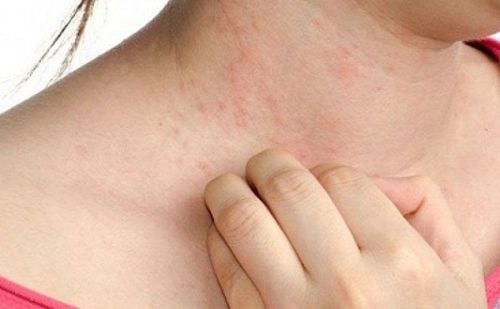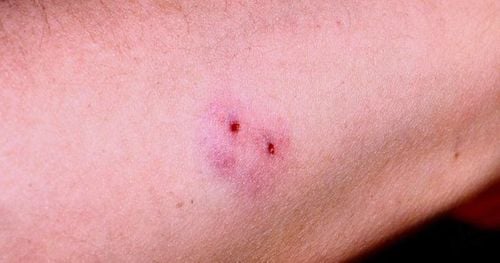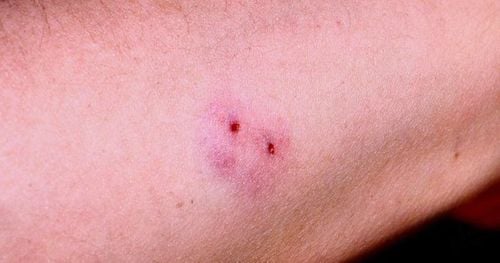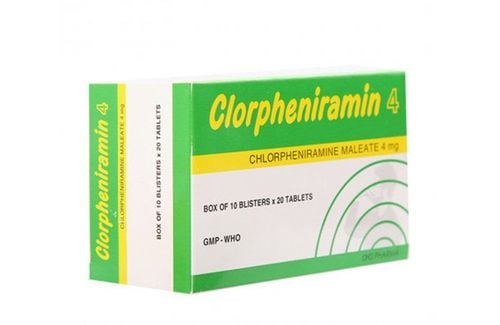This is an automatically translated article.
Anaphylaxis is an allergic reaction that usually occurs within a few minutes or even seconds after the patient is exposed to a sensitive allergen, such as: drugs, food, pollen, pets, or allergies. insect stings,... Currently, according to the classification of the Ministry of Health, based on symptoms and progression, anaphylaxis is classified into 4 levels. In particular, it is worth noting that grade 2 anaphylaxis, because its nature can quickly progress to grade 3, 4, leading to serious consequences in patients. So what is grade 2 anaphylaxis? How to recognize, classify and prevent grade 2 anaphylaxis?1. What is anaphylaxis?
Anaphylaxis is an acute reaction where symptoms and complications occur within seconds, minutes to hours after exposure to an allergen, each causing different situations. Clinically varied which can most seriously lead to death.Anaphylaxis is the most severe form of an anaphylactic allergy presenting with a dilatation of the entire vascular system with sudden bronchospasm that can lead to rapid death.
2. Manifestations of anaphylaxis
The early signs of anaphylaxis can be detected by healthcare professionals or by family members and patients when at least one of the following symptoms occurs after exposure to the allergen:Skin appears urticaria, erythema, pruritus, angioedema. Sudden drop in blood pressure. Heart rate may be rapid, pulse collapse. Consciousness disturbance, restlessness or unconsciousness. Shortness of breath, chest pain, wheezing sound. Nausea, vomiting, abdominal pain, diarrhea. In fact, the symptoms of anaphylaxis can resemble those of other shock states: cardiogenic shock, septic shock, or hypovolemic shock. Respiratory diseases, cerebrovascular accidents, endocrine diseases or alcohol poisoning, ... also have symptoms that cause confusion for the diagnosis of anaphylaxis. The early exclusion and differentiation of the above diseases can shorten the time to manage anaphylaxis, thereby leading to better treatment results.
3. What is 2nd degree anaphylaxis?
According to the guidelines of the Ministry of Health, anaphylaxis is classified into 4 levels. In which, grade 2 anaphylaxis is a severe shock with multi-organ damage, specifically as follows:Urticaria, erythema, pruritus, angioedema appear rapidly. Shortness of breath, hoarseness, chest tightness, runny nose. Abdominal pain, vomiting, diarrhea. Blood pressure may drop or rise, arrhythmia or tachycardia. Thus, unlike the manifestations on the skin and mucous membranes as in grade 1 anaphylaxis, grade 2 anaphylaxis will have one or more symptoms manifesting in many different organs such as respiratory, digestive or circulatory. to a mild degree. The presence of multiple symptoms adds to the diagnosis of the condition, but it is also indicative of a worse prognosis. Clinically, grade 2 anaphylaxis can quickly progress to grade 3, 4 leading to serious consequences in patients, so it must be quickly detected and treated.
4. Causes of 2nd degree anaphylaxis
There are many causes of anaphylaxis today. In which, drugs are the leading allergens, following can be mentioned as food, insect venom, pollen, pet hair,...Drugs: Treatment drugs, especially drugs injected through the oral route Intravenous or intramuscular injections such as antibiotics, vaccines, fluids, anesthetics are common reasons for an allergic reaction. In addition, other drugs such as non-steroidal anti-inflammatory drugs (NSAIDs), contrast agents used in diagnostic imaging, including vitamins,... can still be the source of anaphylaxis. Food: Food of animal origin, especially seafood, is the most common cause. Insect venom: Clinically, it is also very common to experience anaphylaxis due to bee stings, snakes, and scorpions. In addition to the causes mentioned above, anaphylaxis can also occur after strenuous activity, or occur without an identifiable cause.
5. Prevention of grade 2 anaphylaxis
People with a history of allergies or a history of anaphylaxis should wear a necklace or bracelet with an allergen warning message for medical staff to recognize. People with a history of allergies should have an emergency kit on hand with prescribed medications and doctor's instructions. Inform all healthcare professionals about any anaphylactic reactions you have experienced. Currently, according to the Ministry of Health's guidance on pre-vaccination screening for Covid-19 vaccine, people with a history of grade 2 or higher anaphylaxis in the previous time will not be vaccinated with the same type of vaccine. If you have ever been allergic to animals, you should be careful in places with insects, wear long sleeves and pants, do not walk barefoot on the lawns, stay away from bushes. Do not wear brightly colored clothes, do not use perfumes, scented lotions because they attract insects. Regularly clean the house, limit pets in the house. If you have a food allergy, carefully read the labels of the foods you plan to buy and eat. When eating out, you should ask how each dish is prepared, its ingredients behind to avoid eating. It is necessary to immediately go to medical facilities, when discovering that you or your family members have symptoms of an anaphylactic allergy for timely treatment.Please dial HOTLINE for more information or register for an appointment HERE. Download MyVinmec app to make appointments faster and to manage your bookings easily.












